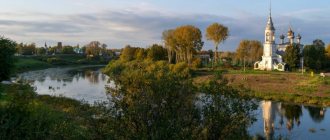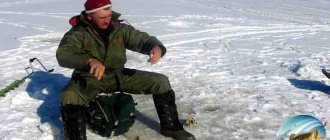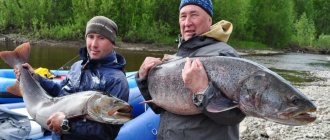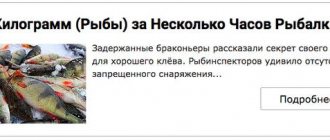Sakhalin is known for its harsh conditions, cool climate, mountain rivers and much more. This is what often attracts experienced fishermen to come here and hunt for real giants, which are practically impossible to catch in other places.
Fishing on Sakhalin attracts with a wide variety of fish and options where you can go fishing. These can be equipped camp sites, fishing at sea, in mountain or calm rivers. Fishing on the northern and southern shores of the island is very different, primarily due to climatic conditions.
Let's try to figure out what attracts fishing enthusiasts to this place, where you can count on a good catch, what season is best to prepare your gear for, and also find out a number of interesting features of this area.
Where can you go fishing on Sakhalin?
When going to Sakhalin, many fishermen are overwhelmed by the variety of fishing options. Of course, there are private lakes and ponds here, but this rarely attracts real professionals, as well as amateurs.
Most often people come here to fish in certain places and under certain conditions, of which there is plenty here. The most common fishing is in the sea or rivers. Let's look at this in more detail.
Sea
Sakhalin is a fairly large island, so you can fish here along almost the entire coast. The most popular place for sea fishing is the Sea of Okhotsk, which washes the island from the east. Sea fishing conditions can be quite different, because sometimes there are more than enough fish, and sometimes catching one fish all day is a great success.
Good to know! The best time for sea fishing is August, because it is at this time that in the sea bays there is a maximum concentration of one of the main trophies for which people come here - large salmon. Fishing is best in bays where the sea connects with large rivers.
Rivers
There are more than 65 thousand different rivers in the Sakhalin region. Of course, most of them are quite small and do not even reach 10 kilometers in length. But there are also large rivers, for example, Poronai and Tym.
The vast majority of rivers in this area can be classified as salmon spawning reservoirs, where you can count on a good catch of pink salmon and chum salmon.
It should be noted that in the northern part of the island the rivers begin to become covered with ice already in the second half of November, and the ice melts only at the beginning of April.
Note! In the southern regions the climate is more pleasant and water bodies freeze much later. In the middle of winter, the ice thickness can reach up to 90 centimeters, making fishing at this time almost impossible.
The most popular northern rivers for fishing:
- Kadylanyi.
- Piltun.
- Big.
- Lengeri.
- Pilvo.
In the central part you can go fishing on the banks of the following rivers:
- Pilenga.
- Bukzhlinka.
- Malaya Tym.
- Longari.
The most popular rivers in the south:
- Makarovka.
- Pugachevka.
- Lazovaya.
- Naiba
Good to know! There are also a huge number of smaller rivers, although you should immediately take into account that it is very difficult to catch large and rare prey in them.
Salmon fish are bred on an industrial scale on Sakhalin
Every year, Sakhalin enterprises produce more than eight hundred million fingerlings. First, they are grown in artificial reservoirs, and then released into rivers and lakes.
At this fish hatchery, like at other magpies located in the Sakhalin region, they are preparing to release fry. They must gain the required weight before heading into natural bodies of water. The island region accounts for 80% of the total volume of artificial salmon reproduction in Russia. The maintenance of one fish hatchery costs, on average, 15 million rubles annually. However, such costs are quite justified. According to experts, industrial salmon fishing in the Far East is ensured precisely through artificial reproduction. And this applies to a greater extent to chum salmon.
At the fish hatchery in the village of Bereznyaki, located near Yuzhno-Sakhalinsk, specialists feed chum salmon fry manually and using automatic devices. The devices regulate themselves and dispense the required dose of feed. So that the more developed do not take food from the weak.
“Young people are active. At the moment, she is well fed and actively feeding. We feed from eight in the morning to eight in the evening—all daylight hours,” said Svetlana Galotina, a fish farmer at a fish hatchery in the village. Birch forests.
The diet includes high-calorie fish food, brought from Denmark, with protein and vitamins. By feeding on it, the fry will gain the required weight by the time they are released into the river. Juvenile pink salmon should gain about 300 milligrams. Chum salmon - several times more. This type of salmon, by the way, is more finicky and heat-loving. Therefore, the plant equipped special wells.
“With these two water pipelines, we can mix the water and get the desired temperature, which is what we need at a certain stage of chum salmon development,” added Konstantin Gavrilov, a specialist at the fish hatchery in the village. Birch forests.
In 2014, it is planned to release more than 800 million fry into the Sakhalin and Kuril rivers. From there they will go to the sea, where they will grow and multiply. In the meantime, they are kept in complete darkness - conditions as close as possible to natural ones.
“Of these, about 300 million are pink salmon. More than 400 million are chum salmon. About two million are coho salmon and about a million are salmon,” listed Leonid Koryakovtsev, head of the department for the reproduction of aquatic biological resources of the Sakhalinrybvod Federal State Institution.
The release of juveniles into the Sakhalin and Kuril rivers is planned for the end of May. A little later, salmon fishing will begin in the region. Experts have not yet made accurate forecasts for big fishing. However, according to scientists, the fishermen's catch will largely be ensured by the release of fry in previous years.
What kind of fish can you catch on Sakhalin?
Almost everyone comes here to fish for salmon, but in addition to this, many other inhabitants can be found in the reservoirs of Sakhalin:
- Pink salmon.
- Lenok.
- Red sockeye salmon.
- Taimen.
- Chum salmon.
- Chinook salmon.
- Smelt.
- Sturgeon.
- Kaluga.
- Flounder.
- Chinese perch.
- Crucian carp.
- Rudd.
- Yellowcheek.
- Cod.
- Navaga.
- Herring.
- Saira.
- Japanese anchovy.
Let's celebrate! Of course, this is not a complete list, but here are the most popular trophies that most fishermen want to catch. For exotic lovers, in the sea you can find sea urchin, hermit crabs, copper, octopus and much more.
Popular types of fish
It is known that Sakhalin is washed by the waters of the Sea of Japan. It is famous for its abundance of different types of fish. About 130 species live in its northern part, and more than 400 in the southern part. Of course, not all species are commercially available and are of interest to humans.
Most people inextricably associate the peninsula with its abundance of salmon. This is understandable, because they regularly enter the rivers of Sakhalin to spawn. The following types can be found there:
- Pink salmon. The species is considered the most widespread on the peninsula. When swimming in the sea, individuals are distinguished by their bright silver color. When they enter rivers, they become covered with dark spots. Fish meat is considered very useful for humans. It contains many vitamins and minerals. Some fishermen bring home tens of kilograms of pink salmon.
- Chum salmon. Sakhalin is the birthplace of individuals of this species. However, it is there that entire flocks die after spawning. The main distinguishing feature of chum salmon is its large, bright red caviar.
- Coho salmon Sakhalin residents often call it “white fish”. This is due to the color of the scales. Individuals can weigh more than 16 kilograms. The main advantage of coho salmon is its very tasty and tender meat.
- Red salmon. Most often, individuals of this species are found in the east of the peninsula. It is very similar to chum salmon, so some fishermen confuse these species. They can be distinguished only by the number of gill rakers. Chum salmon has 18, and sockeye salmon has 30. Sockeye salmon meat is prized for its phosphoric acid content. It is necessary for the proper functioning of all body systems.
Of course, other species can be found on the peninsula.
Fishermen note a large number of pollock, saury, cod, smelt and flounder. In the summer, many fishermen bring sardines, mackerel and squid from the reservoirs. If the summer turns out to be hot, then in the coastal waters you can find pine breams and flying fish.
The following types of fish are found in the rivers of the region:
- Dolly Varden;
- kunja;
- pike;
- perch;
- rudd;
- taimen;
- ugai (sea rudd).
Among fishermen, taimen enjoys special respect . It is very difficult to catch this fish, as it often breaks the fishing line. It is for her that fishermen flying from the mainland hunt.
Seasonality of fishing on Sakhalin
In fact, you can fish in this area all year round. In winter and early spring there are fewer fish and the bite is worse; in summer things go much better, but the best time is August and early September.
It is in August that fish begin to enter the rivers and you should get there shortly before that. In this case, almost certainly every experienced fisherman will be able to catch a huge amount of salmon and pink salmon. It is best to use a spinning rod for fishing.
Good to know! In summer you can fish in calm rivers or local lakes. If possible, an excellent option is fishing from a boat or boat in the sea. People also often come here to fish in mountain rivers, which are sometimes quite difficult to get to. The best time to fish in such places is in the fall.
What kind of fish can you catch in Altai?
Grayling
Allowed gear: float rod, spinning rod, fly fishing, bottom gear. Bait: Grayling loves live food, although it is worth noting that this fish has its own preferences depending on the time of year. In summer and autumn, grayling goes well for mollusks and insects (dragonflies, gadflies, ants, grasshoppers, beetles). In the spring - for a worm. In winter - with jigs. A win-win option at any time of the year is maggots. When it comes to artificial baits, focus on the fly. According to observations, the greatest effect is produced by flies of very bright colors: poisonous green, pink, yellow, etc. Allowable catch weight: the daily catch rate of grayling in Altai per person is 10 kg. According to the rules, it is prohibited to harvest grayling smaller than 18 cm in size (length measured from the top of the snout to the base of the middle rays of the caudal fin).
Grayling fishing in Altai is popular all year round. Photo: globallookpress.com
Grayling belongs to the salmon family. The fish lives in rivers with fast currents, rapids, and deep pools. It has a large dorsal fin, similar to a sail. It is found only in clean, cold water with a high oxygen content. That is why scientists call grayling an indicator of safety and environmental friendliness. The average weight of grayling caught is 500-700 grams. Specimens up to one and a half kilograms are considered trophy. In Altai, grayling lives in the rivers Katun, Biya, Chulyshman, and Sumulta.
Grayling meat is delicious, dietary and hypoallergenic. And in its nutritional value it surpasses turkey meat and veal.
Grayling fishing in Altai is popular all year round. However, the most intense bite occurs from May to September. Fishing is most effective in the early morning, from 4 to 5 o'clock and from 7 to 8 o'clock, as well as after 18 o'clock. At this time, grayling begins to actively hunt.
Peled
The ideal time of day to catch peled is early morning or evening. Photo: pexels.com
Allowed gear: float rod, fly fishing, donka. Bait: use mosquitoes, worms, shellfish meat, bloodworms, maggots. In the winter season - a jig. Allowable catch weight: the daily catch rate of peled in Altai per person is 10 kg. According to the rules, it is prohibited to harvest individuals smaller than 26 cm (length measured from the top of the snout to the base of the middle rays of the caudal fin).
Peled is a valuable fish from the salmon family. Lives in lakes or rivers with small currents. The largest population of peled lives in the Ob River, which flows through the Altai Territory. By the way, here this fish is called cheese. The average weight of fish is 300-700 grams. Peled meat is similar in nutritional value to chicken. The taste is reminiscent of omul.
Peled fishing occurs all year round. But still, the best period for catching it is autumn and spring. Peled is a very shy fish, so when catching it you must strictly observe silence. The ideal time of day for fishing is early morning or evening.
Zander
Allowed gear: spinning rod, float rod, feeder. Bait: pike perch, like any predator, goes for live bait, which can be small minnows, roach, crucian carp, bleak, and dace. For night fishing, frogs or crayfish are ideal. Among spinning baits, silicone fish and vibrotails are unrivaled. Allowable catch weight: the daily catch rate of pike perch in Altai per person is no more than three fish. According to the rules, the caught fish must be at least 33 cm (length measured from the top of the snout to the base of the middle rays of the caudal fin).
Pike perch is one of the most common predators in Altai reservoirs. Photo: commons.wikimedia.org
Pike perch is one of the most common predators in Altai reservoirs. However, catching it is not so easy, because the fish behaves very carefully. Pike perch has very good hearing; it can hear sounds from the shore, right down to a person’s footsteps. In Altai reservoirs there are many trophy pike perch weighing 10-12 kg.
Pike perch meat has a delicate taste and is dietary due to its high protein and low fat content.
Fishing for pike perch, or as it is popularly called “river tiger”, goes on throughout the year, with the exception of the spawning period. The best time for fishing is early spring and October. At this time, the water temperature is most favorable for pike perch. The weather plays a decisive role. During a storm, strong wind, or rain, pike perch lies on the bottom, and it’s simply pointless to wait for a bite
The best time for fishing is early in the morning from 4 to 5 and from 7 to 8 o’clock, and in the evening after 18 o’clock.
Ide
Permitted gear: float rod, feeder gear and spinning rod. Some people try to catch ide by fly fishing, but this direction is less popular, although it is very interesting. On rivers you can try to catch this fish with a bottom fishing rod. Bait: in winter, ide are caught with bloodworms, and in the warm season - with worms, maggots, chafers, flies, and dragonflies. When choosing live bait when fishing with a feeder, stop at rudd, roach or crucian carp. Among the artificial baits, small poppers, micro spoons and flies are ideal. Fishermen also often feed ide with canned corn, fresh peas or pearl barley. Allowable catch weight: the daily catch rate of ide in Altai per person is 10 kg. According to the rules, it is prohibited to take specimens smaller than 25 cm in size (length measured from the top of the snout to the base of the middle rays of the caudal fin).
The ide can be recognized by its scarlet-red fins and small head. Photo: commons.wikimedia.org
Ide is a fish of the carp family. Can grow up to 6 kg. However, the average weight of fish caught is 2-3 kg. A distinctive feature is the scarlet-red fins and small-sized head, which distinguishes the ide from its closest relative, the chub. The fish often stays in areas shaded by tree crowns, as well as near bridge supports.
Ide meat is white and tender. However, the taste is very peculiar, not for everyone.
Ide can be caught all year round. But the best bite is observed in the spring, in the post-spawning period, as well as during the flight of the cockchafer (from mid-May to the end of the first ten days of June). Fishermen note that in summer the ideal time for biting is from 6:00 to 8:00. In autumn - from 10:00 to 11:00 and from 14:00 to 17:00.
Burbot
Allowed gear: feeder, bottom gear, live bait. Bait: small fish (this predator especially loves ruffe and perch) or a bunch of worms (dung worms are best). You can lure the bottom dweller with beef liver or a piece of smoked lard. Allowable catch weight: the daily catch rate of burbot in Altai per person is 10 kg. According to the rules, it is prohibited to take specimens smaller than 41 cm in size (length measured from the top of the snout to the base of the middle rays of the caudal fin).
Burbot, the only freshwater representative of cod, lives in cold and clean water. Photo: globallookpress.com
Burbot is the only freshwater representative of cod fish. This is one of the most ancient species, appearing many millions of years ago. Burbot lives in cold and clean water. The fish is quite large and is found at the very bottom of reservoirs. It can descend to a depth of more than 100 meters. The body of burbot is abundantly covered with mucus.
Meat is a delicacy. By the way, a tenth of the burbot’s weight is occupied by the liver, which is very valuable and useful.
The best time to catch burbot is autumn and winter. As soon as the water cools (late September), the fish become more active. And by the end of autumn, the burbot begins to have a pre-spawning feast, so from November the cod predator begins to actively peck. In general, the whole winter is good for catching it. In spring, the bite gets worse - the more the water warms up, the more difficult it is to catch fish. Summer is completely unpromising; burbot goes into hibernation.
It is noteworthy that on the Altai Lake Teletskoye, fishing for burbot is relevant throughout the year due to the fact that the water here, even in summer, does not warm up above +10 degrees, so burbot is always active.
As for the time of day, the burbot's waking time is night. Therefore, evening or night fishing awaits everyone who hunts for it. The predator bites best in inclement weather.
This is interesting: Lake Salkovskoe: fishing and what kind of fish is found
Top best fishing camps on Sakhalin
Fishing on Sakhalin is very developed, so you can even get special vouchers from many travel agencies. Also, local residents often organize trips to “fishing spots” in minibuses for one or two weeks.
Let's look at some of the most popular fishing camps in this region:
- Tourist complex "Aquamarine". Located on the coast of the Sea of Okhotsk. There are all the conditions for a good holiday, as well as organized tours for sea fishing, fishing on rivers and lakes.
- Recreation center "Tunaicha". The base is named after the lake on the shore of which it is located. This is a great family vacation and also includes fishing on a large lake. There are boats and boats available here, so you can have plenty of fishing.
- "Diving Club" From the name it becomes clear that the main specialization is the study of the underwater world. But besides this and many excursions, you can fish here all year round. The diving club provides snowmobiles, warm clothing and complete equipment for winter fishing, as well as all the necessary accessories for summer fishing. Even a beginner can come here, because there are even specialists here who will help you choose gear and teach you how to fish.
Reviews from fishermen about fishing on Sakhalin
I have long dreamed of fishing in the Sea of Okhotsk from a boat, and in the summer such an opportunity arose. I went on my own, without travel agencies, and stayed with locals, which turned out to be quite cheap, and the people were friendly. From them I learned where I could get a boat and go fishing from it. As it turned out, residents here organized their own business, rented a boat, recruited fishermen and, for a reasonable price, went out to the open sea for the whole day. Here they will give you bait and tell you how best to fish, they will help and teach you. In a word - a great holiday and great fishing, even in the wild.
Grade:
Alexey Novoselov (34 years old).
More than 5 years ago I came to the Tatar Strait, and had the opportunity to visit the village of Pilvo. I met the locals, and a few days later they offered to swim out with them and hunt crabs. Of course, I prefer quiet fishing with a fishing rod on the shore of the lake, but that day I got unforgettable emotions, I hope when I’m lucky enough to get there again. Grade:
Victor Smirnov (44 years old).
Last year I took a vacation at the beginning of August and went to Sakhalin. I wanted to catch salmon and explore the east coast of this beautiful and sometimes harsh island. I never thought I would see so many salmon and pink salmon live. By the end of the vacation, I no longer wanted to look at these delicacies, because that was all I ate. It is also worth mentioning the clean air and beautiful scenery. Grade:
Grigory Narozhny (51 years old)
Makarovka and Naiba are two rivers where we managed to fish. We can say that it was here that I fell in love with real fishing. They say that Sakhalin is a place for experienced fishermen, but even two years later I have not seen such a catch as after fishing on these two rivers, and I was a beginner then. Maybe it’s just luck, but I still recommend these rivers to everyone. Grade:
Maxim Skripka (29 years old)
I have long wanted to go fishing on Sakhalin, but my family and children did not share my passion. As a result, we took the train to the Aquamarine camp site. He left his family to rest in cozy rooms, and he went straight to the fishing rod. Two weeks flew by quickly, and everyone enjoyed the holiday, now we are going to do this again. I would also like to note that there are boats for rent and boats and all the gear, and everything is free or for a nominal fee, so you don’t have to worry if you forgot something at home, you can go light.
Grade:
Evgeny Gorsky (44 years old)
Good to know! To summarize, it should be said that fishing on Sakhalin has been and remains a very interesting and exciting pastime. A huge number of fish and reservoirs will not leave any fishing enthusiast indifferent.
Summer fishing on the peninsula
After the rivers open up from ice, hundreds of fishermen with spinning rods appear on the banks. Lovers of Dolly Varden and Kunja go to the river rifts. It is there that you can catch specimens weighing more than 2 kilograms. Sometimes you can also find small taimen there.
Fishermen say that it is very difficult to spot fish in choppy water . Individuals very quickly capture prey as soon as they see the spoon. The fish is desperately fighting for its life and trying to free itself. At this moment, the fisherman has to act very carefully in order to pull the fish ashore.
It is known that Dolly Varden and taimen can only be caught in clean waters, so amateurs have to go to remote parts of the peninsula. Kunja is not so demanding on water quality. It can even be found in peat bogs in the tundra.
Some fishermen go to the rivers for sea rudd. It enters the rivers immediately after the ice melts. After spawning, most of the flock goes to sea, but some individuals remain in the rivers throughout the summer. When catching this species, use bottom gear with large hooks. Ugai is not considered a large fish. The average weight of an individual does not exceed 1 kilogram.
In early June, many fishing enthusiasts go to the Tym and Poronai rivers. At this time you can catch the following types of fish:
- bream;
- crucian carp;
- pike;
- taimen;
- burbot;
- Malma
It is best to catch bream at dawn or at sunset . In the evening, bream reacts very quickly to any bait. It is worth noting that with the arrival of autumn the bite becomes even better. During the period of the first frosts, the largest specimens were caught.
Fans of burbot can enjoy their favorite fish only in June. At this time, a good bite for this species is ensured. After the water in the rivers warms up, individuals try to hide well. Already at the end of July it is almost impossible to catch burbot.
Fans of flounder and greenling most often go to the bays. In the summer, fish bite on almost any bait. You can use a float rod, bottom tackle or spinning rod.
You need to start catching red fish before the mass arrival for spawning. At the beginning of August, the first schools of pink salmon and chum salmon already appear. In September it is difficult to approach the rivers due to the strong smell of rot. It is associated with the death of fish that spawn. Some fishermen saw hundreds of dead fish floating in the river. They prevent live fish from rising to the spawning ground.










